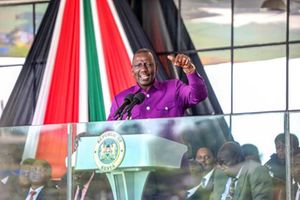Groups protest at Ethiopia power dam

An El Molo boy fetches water at Lake Turkana in northeastern Kenya. If completed, the Gibe III Dam will devastate the fragile ecosystems of the Lower Omo Valley and Kenya’s Lake Turkana. PHOTO/ REUTERS
What you need to know:
- Project likely to destroy the livelihoods of thousands
An Ethiopian power project could destroy the livelihoods of more than 500,000 people, many of them in Kenya.
International conservation groups are urging Western donors and banks not to fund the Gibe III hydro-electric dam project.
The dam is being built on River Omo, which flows from southern Ethiopia into Lake Turkana in northern Kenya.
One of the NGOs, US-based International Rivers, said the Ethiopian government awarded a Sh159.6 billion ($2.1bn) contract for the construction of the dam, the country’s biggest infrastructure project ever, to Italy’s Salini.
In a recent report, it said “there was no competitive bidding” in the process. “Project construction started without an Environmental Impact Assessment and a completed economic, financial and technical assessment,” it added.
The report goes on to say that “if completed, the Gibe III Dam will devastate the fragile ecosystems of the Lower Omo Valley and Kenya’s Lake Turkana, on which 500,000 poor farmers, herders and fisherfolk rely for their livelihoods.”
International Rivers has been joined in the crusade against the project by European NGOs, including Counter Balance, the Friends of Lake Turkana, Survival International and the Italian group Campaign for the Reform of the World Bank.
Campaigners also fear that the dam would reduce the flow of water into Lake Turkana. The dam would flood a huge area, creating a 150km-long lake.
But Ethiopia’s government disagrees, saying that the dam is needed to generate enough electricity for its population and to sell abroad.
Mr Tewolde Gebre Egziabher, head of Ethiopia’s Environmental Protection Authority, told the BBC that the project was “very sensible”.
“The advantages for the whole country, the local communities, and even for our neighbouring countries, including Kenya, far outweigh the small problems that will be caused at the short term,” Mr Egziabher said.
Construction work is underway on the dam, which would be Africa’s second largest hydro-electric dam, providing 1,800 megawatts of electricity.
But International Rivers, says the government still needs about Sh106.4 billion ($1.4bn) to complete it.



